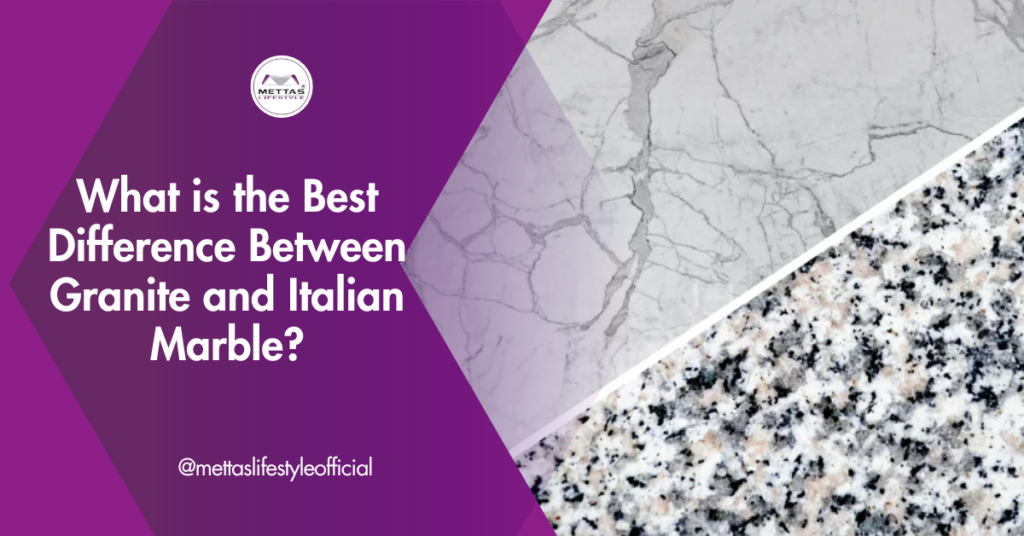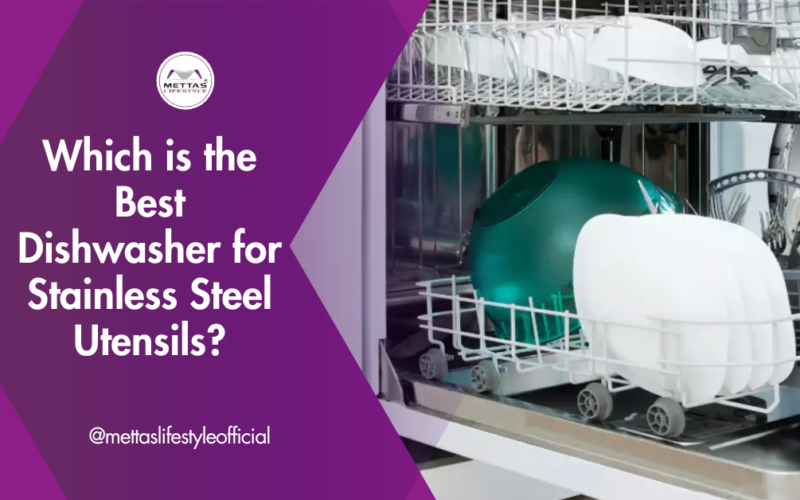

Table of Contents
ToggleIntroduction: the Best Difference Between Granite and Italian Marble
When it comes to choosing between granite and Italian marble for your home or commercial space, both materials have distinct qualities. This guide will help you understand the best differences to make an informed decision.

1. Durability
Granite:
Granite is a highly durable stone and resistant to scratches, heat, and wear, making it ideal for high-traffic areas like kitchens.
- It can withstand high pressure.
- Heat resistance is excellent, perfect for countertops.
- Less prone to chipping and cracking compared to softer stones.
Italian Marble:
Italian marble is softer and more prone to scratches and staining, which means it requires extra care.
- Prone to etching from acidic substances.
- Softer texture requires more maintenance.
- Suitable for low-traffic areas like bathrooms and flooring.
2. Aesthetics and Appearance
Granite:
Granite comes in a variety of colors and patterns, often with flecks, veins, or streaks, which give it a unique look.
- More granular texture and color variety.
- Bold, eye-catching patterns.
- Can have a speckled or grainy appearance.
Italian Marble:
Italian marble is prized for its luxurious, elegant appearance with flowing veins of color.
- Known for its soft and classic look.
- Delicate veining patterns.
- Available mostly in lighter tones like white, beige, and grey.

3. Porosity and Stain Resistance
Granite:
Granite is less porous compared to Italian marble, making it more resistant to staining.
- Requires occasional sealing.
- Withstands spills better.
- Ideal for kitchen countertops where spills are common.
Italian Marble:
Italian marble is highly porous and more likely to absorb liquids, leading to stains.
- Requires frequent sealing to avoid stains.
- Sensitive to acidic spills like vinegar and wine.
- Not ideal for kitchens without regular maintenance.

4. Cost
Granite:
Generally more affordable than Italian marble, granite offers high durability at a lower price point.
- Cost ranges from moderate to high, depending on the type.
- Ideal for budget-conscious projects.
- Offers great value for money.
Italian Marble:
Italian marble is often more expensive due to its luxurious nature and reputation.
- High-end, premium material.
- Installation costs can be higher due to fragility.
- Suited for luxury spaces.
5. Maintenance Requirements
Granite:
Granite requires minimal maintenance; cleaning it with water and mild detergent is usually sufficient.
- Sealing once a year enhances longevity.
- Resists bacteria and mold buildup.
- Simple cleaning methods.
Italian Marble:
Italian marble requires regular sealing and specialized cleaning products.
- Needs frequent sealing to maintain its finish.
- Sensitive to harsh cleaning chemicals.
- Regular polishing is necessary to retain its shine.

6. Heat and Fire Resistance
Granite:
Granite is highly resistant to heat, making it a popular choice for kitchen countertops.
- Can withstand high temperatures without damage.
- Ideal for areas near stoves and ovens.
- Fire-resistant material.
Italian Marble:
While Italian marble can resist heat, it is more likely to get damaged when exposed to high temperatures.
- Prone to discoloration under prolonged heat.
- Not suitable for high-heat areas.
- Requires extra care in kitchens.
7. Weight and Installation
Granite:
Granite is denser and heavier, which means installation can be more difficult.
- Requires strong support for large slabs.
- Installation can be labor-intensive.
- Best installed by professionals due to its weight.
Italian Marble:
Italian marble is lighter in weight, making it easier to install compared to granite.
- Easier to cut and shape for various designs.
- Can be installed in smaller spaces with minimal structural changes.
- Still needs professional installation.

8. Sustainability
Granite:
Granite is a natural stone that is quarried, which can have an environmental impact.
- Some quarries use more eco-friendly methods.
- Long lifespan reduces the need for replacement.
- Not as easily recyclable.
Italian Marble:
Italian marble is also a natural material, but its extraction methods and transportation can be energy-intensive.
- Extraction can affect the environment due to quarrying.
- Requires specialized recycling processes.
- Sought-after for its natural beauty despite the environmental impact.
9. Application Versatility
Granite:
Granite is versatile, used in countertops, floors, and outdoor spaces.
- Ideal for kitchens, bathrooms, and exterior applications.
- Can be used for walls, paving, and sculptures.
- Available in polished or honed finishes.
Italian Marble:
Italian marble is more limited in use due to its softness, often used for decorative purposes.
- Perfect for decorative walls, floors, and sculptures.
- Used in high-end bathrooms and living rooms.
- Less suited for heavy-duty applications.
10. Resale Value
Granite:
Homes with granite countertops or features tend to have higher resale values due to granite’s durability and appeal.
- A strong selling point for buyers.
- Lasts longer without needing replacement.
- Considered a timeless investment.
Italian Marble:
Italian marble, being a luxury material, can increase the resale value of a home when used in premium spaces.
- Adds elegance and a luxurious feel to spaces.
- Appeals to buyers looking for high-end materials.
- Increases property value in upscale markets.
Conclusion
Both granite and Italian marble have their distinct advantages depending on your needs. Granite is durable, versatile, and more affordable, making it a great option for kitchens and outdoor spaces. On the other hand, Italian marble offers unmatched elegance and is ideal for luxurious, low-traffic areas. Understanding the key differences in durability, cost, maintenance, and aesthetics will help you choose the best material for your space.
Have questions about your next renovation project? We’ve got answers. Let’s do this together.
Follow House Beautiful on Instagram.
FAQs
Granite is generally more durable and resistant to scratches and heat compared to Italian marble.
Granite requires less maintenance, needing occasional sealing, while Italian marble requires frequent sealing and polishing to maintain its appearance.
Yes, Italian marble is typically more expensive due to its luxurious appeal and rarity.
While Italian marble can be used in kitchens, it is more prone to stains and scratches, making granite a better choice for high-traffic areas.
Granite is better suited for outdoor use due to its durability and resistance to weather conditions, while Italian marble is more sensitive to environmental factors.




